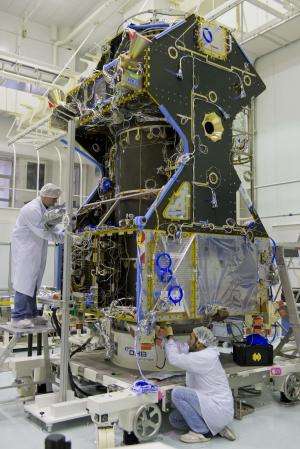Image: Backbone of ExoMars

To explore requires a strong backbone – and that goes double for space exploration.
The 1.194 m-diameter 3.5-m high composite cylinder at the centre of this structure is the backbone of ESA's ExoMars Trace Gas Orbiter core module, due for launch in 2016.
It has the task of transmitting the forces and stresses of launch throughout the rest of the spacecraft. It also houses the propellant and oxidiser tanks for the Orbiter thrusters – attachment points for the tanks are visible as lines of gold-coloured circles around the central tube.
The spacecraft is seen here during integration of its electrical subsystems in the cavernous Thales Alenia Space cleanroom in Cannes, France, last November.
The cylinder extends to the top of the core module, where the Schiaparelli entry, descent and landing demonstrator module will be held during the flight to Mars, before separating for landing.
The Orbiter itself will remain in Mars orbit to image surface features and study the composition of the atmosphere, including sniffing out trace gases such as methane, recently detected on the surface of Mars by NASA's Curiosity rover.
Provided by European Space Agency





















